Author: A Fox; Compiler: Shenchao TechFlow
Abstract of this article:
Rollup as a Service (RaaS) is a new business model that allows anyone to create without coding and deploy your own L2 Rollup.
Conduit is a very easy to use RaaS provider, below you will see how quick and easy it is to run with just a few clicks Ethereum Virtual Machine (EVM) L2 Rollup.
When your Rollup is active, you can bridge ETH into it and deploy smart contracts and dapps, for example, I A token called DOG is created and transferred.
Conduit also sets up a block explorer for you so you can easily visualize everything on the chain.
Text
As the Ethereum mainnet becomes too Slow and expensive, so we saw the growth of Ethereum L2, much of which was Rollup which I discussed before.
Creating your own Rollup requires a relatively deep understanding of blockchain, but the recent growth of "Rollup as a service" (RaaS) providers means You can deploy an L2 Rollup in minutes without writing a single line of code!
In this article, I will briefly explore the working principle of RaaS by observing Conduit.
Rollups and RaaS
As Ethereum seeks to scale to process more transactions per second , Layer 2 (L2) solutions continue to grow, and we looked at EVM L2 in past articles.
Rollup is the most popular L2 type on Ethereum today. As a brief reminder, Rollup is a separate blockchain that performs transactions and then publishes the Rollup version back to the main chain.
There are hundreds of examples of L2 Rollups, as shown in the figure below.
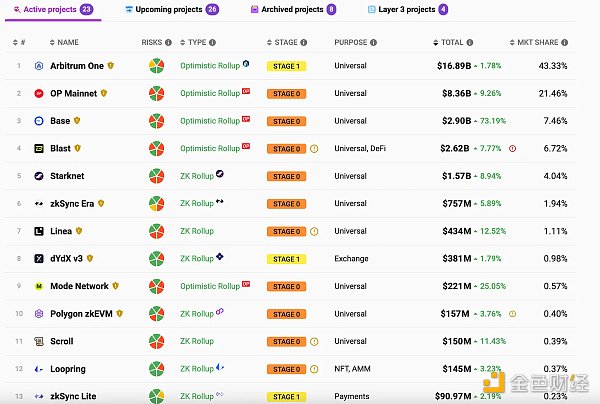 < /p>
< /p>
However, despite the emergence of chains such as Optimism and Arbitrum, which have created their own toolkits to create L2 faster, creating your own L2 is still not A small thing and requires some technical knowledge. Additionally, you need to run nodes to support L2, which can also get complicated.
This challenge has given rise to a new type of business, providing "Rollup as a Service" (RaaS). With RaaS, anyone can create and deploy their own Rollup in minutes by pressing a few buttons and start bridging ETH and running smart contracts and dapps on their own L2!
Below I will show you how easy it is to create a Rollup using RaaS.
Conduit
There are already many competitors in the RaaS field, including Astria, Caldera, AltLayer, Conduit et al.
For this article, I chose to use Conduit, which I found to be very fast and easy to get started with.
According to them, Conduit allows you to: "Deploy a Rollup in minutes, not months." Offering "fully managed, production-grade, Customizable rollups for Ethereum, Optimism, Arbitrum, Base, Mode and Zora."

Their landing page very clearly shows how easy it is to create a Rollup using Conduit Quick and easy.
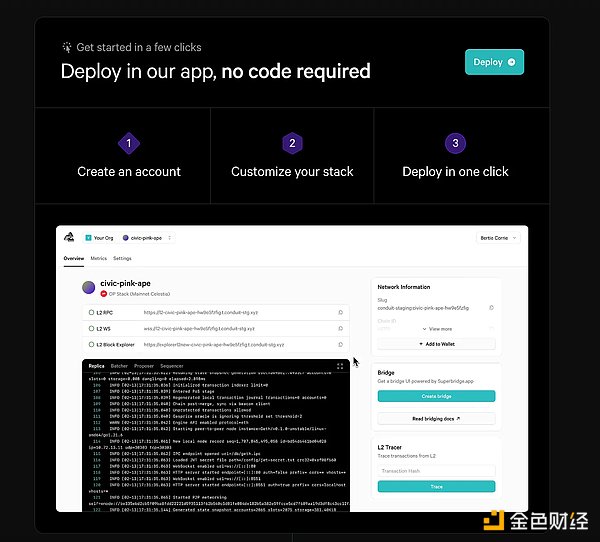 < /p>
< /p>
Let's find out in the following steps.
Create a Rollup
First, on the landing page Select the Deploy button and you will be asked to create an account and organization, then immediately taken to the setup page to deploy your first Rollup.
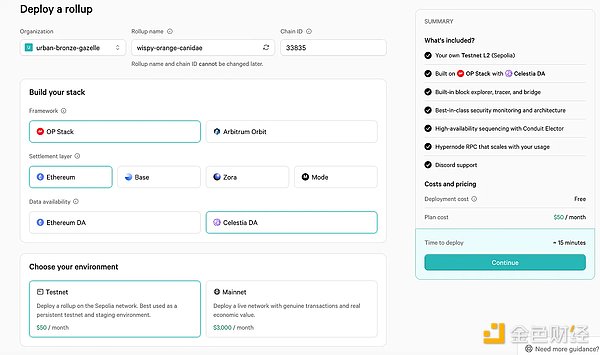 < /p>
< /p>
Using Conduit to create a mainnet rollup will cost $3,000 per month. Whether you need a mainnet rollup or not, you can still use a testnet rollup to get started. The cost is only $3,000 per month. Requires $50.
Conduit allows you to use Optimism's OP stack or Arbitrum's Orbit stack. If you select Orbit, you'll find that the subsequent options change accordingly.
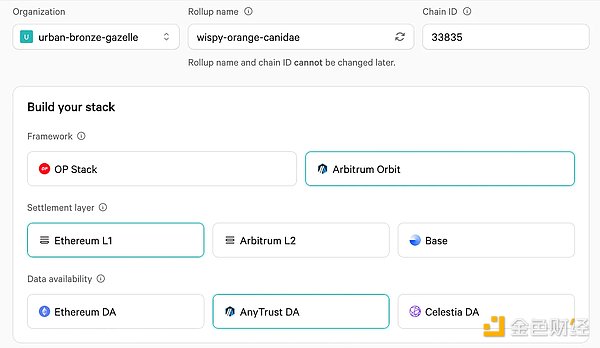 < /p>
< /p>
The settlement layer is the layer that guarantees the finality and security of transactions, while the data availability layer is the maintainer of the information needed to reconstruct the Rollup at any given moment.
Both are important, but as a simplified solution settlement should really be on a more decentralized blockchain like Ethereum, With the highest financial security, data availability can be on a more centralized blockchain like Celestia, which supports storing more data at a lower cost.
In my testnet example, I stuck with the OP stack, using Ethereum as the settlement layer and Celestia as the DA. Nonetheless, Conduit allows you to mix and match these to find what works best for your specific use case.
When you continue, you will be asked to pay a monthly fee of $50.
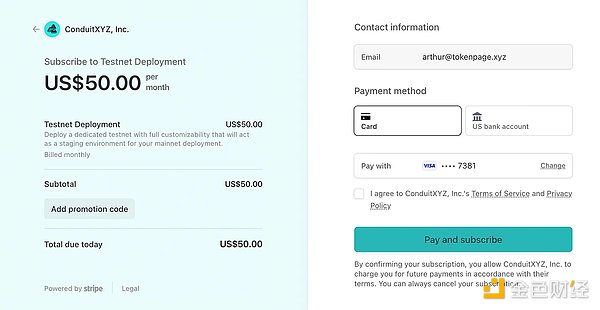 < /p>
< /p>
Once payment is completed, you are done! Within minutes, you have configured your first L2 Rollup.
You now only need to wait 15-20 minutes for Conduit to set everything up. Once completed, the deployment will appear as follows:
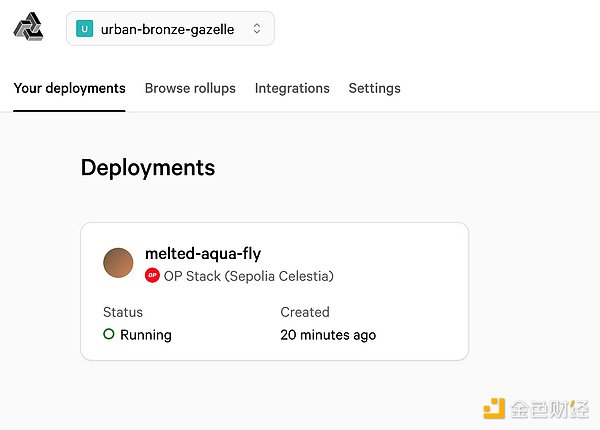
Your organization and rollup names can be edited. You can now start using your new L2 Rollup!
Get started with your Rollup
Select on the deployment page After your Rollup, the Rollup information will be displayed as follows:
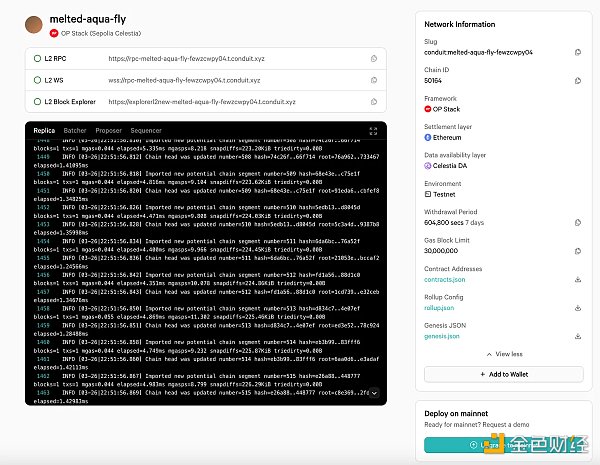
Rollup configuration settings are displayed on the right, and the output in the black terminal box indicates that L2 is running. At the moment you don't really need to understand what the output means, all you need to see is that it updates continuously.
You will need to select "Add to wallet" to add the network to your Metamask or equivalent wallet.
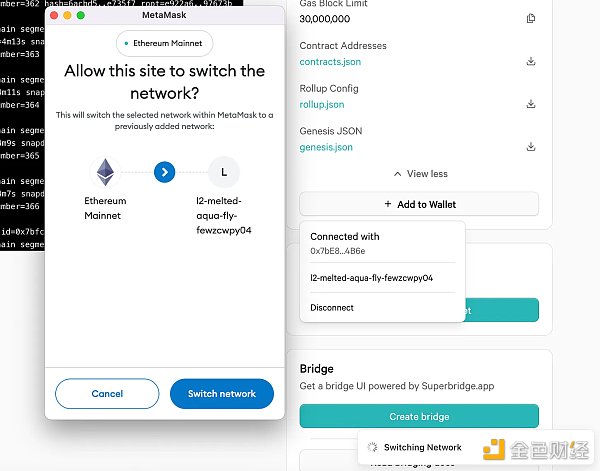 < /p>
< /p>
Then you should click Create Bridge" in the bridge section, which will open a bridging software called SuperBridge.
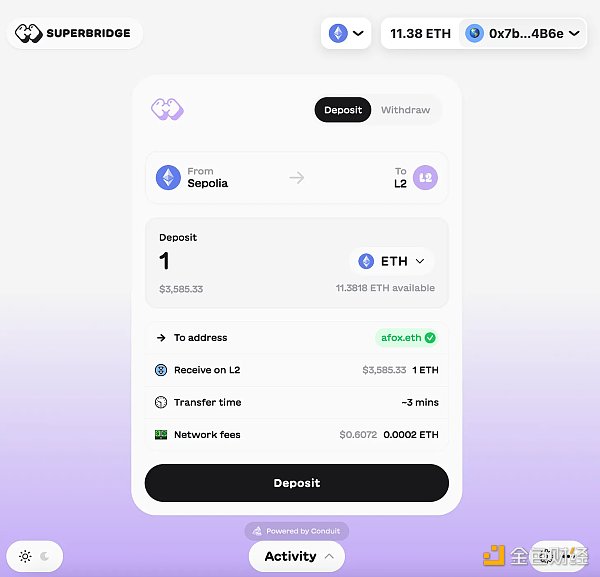
Since we are on the test network, you will be able to bridge Sepolia ETH to your new Rollup. If you don't have any Sepolia ETH, you can start from This faucet gets.
I bridged over 1 ETH a few times and ended up with 2 testnet ETH on my new L2 Rollup, on my Metamask You can see it on the wallet!
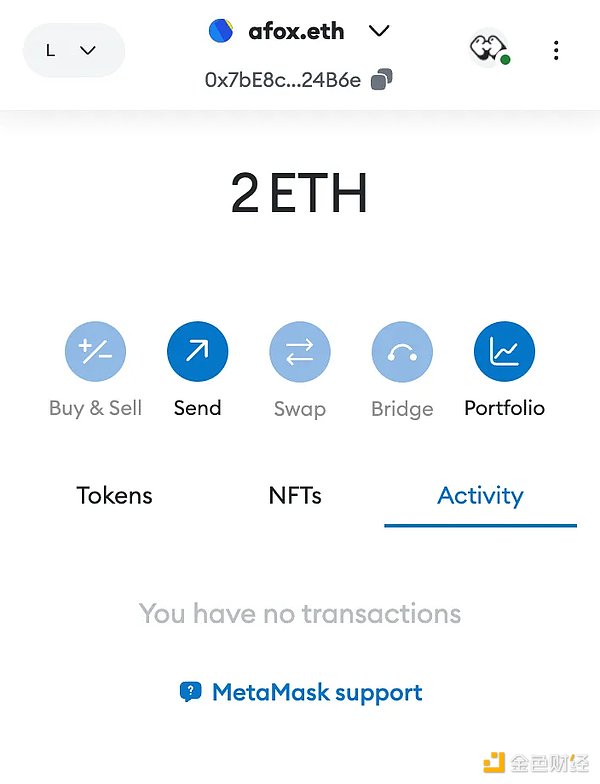
Now that you have the test network ETH bridged to your new Rollup, you can start using it!
Further use of your Rollup
Now that you have your own L2 Rollup, you can directly Deploy the code into it.
First open the Remix IDE, I have explained how in my tutorial called "Writing your first smart contract" Use it.
Then copy the code below into a new file in Remix.
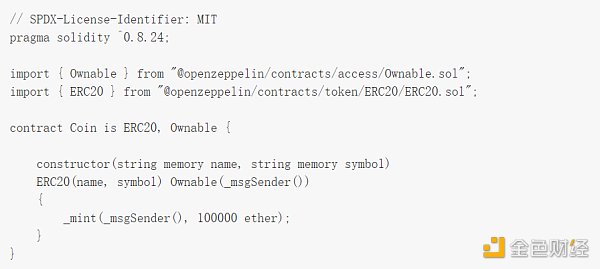
Update the environment to "Injected Provider" and set your Metamask to the new Rollup. Name your token next to the orange deploy button and symbols, in this case I wrote "Dog, DOG" and then clicked deploy.

You will need to sign this transaction in Metamask, and when the transaction is processed, you will have just created a new generation on your new L2 Rollup coin, this is cool!
If I open Metamask, I can add the coin to my wallet by copying the contract address created in Remix.< /p>
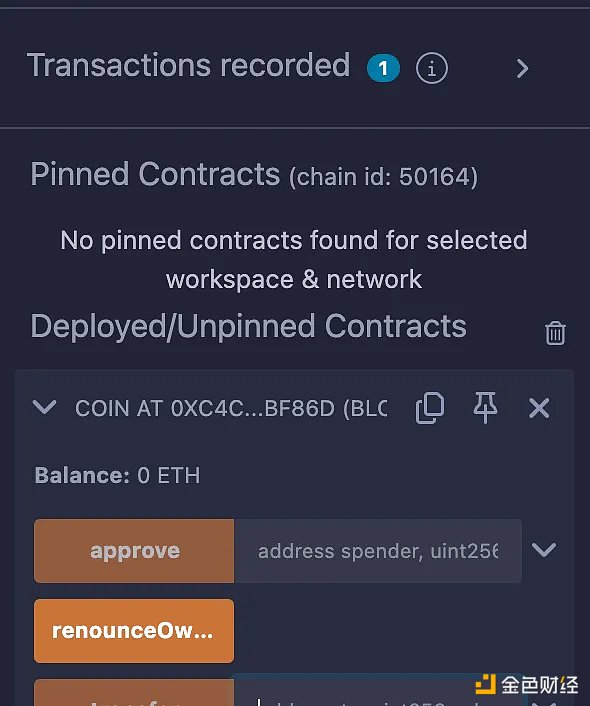
After doing this, I can see that my new Dog token has a balance of 100000 DOG. In Metamask, I can send 100 DOG to Another address on the Internet.
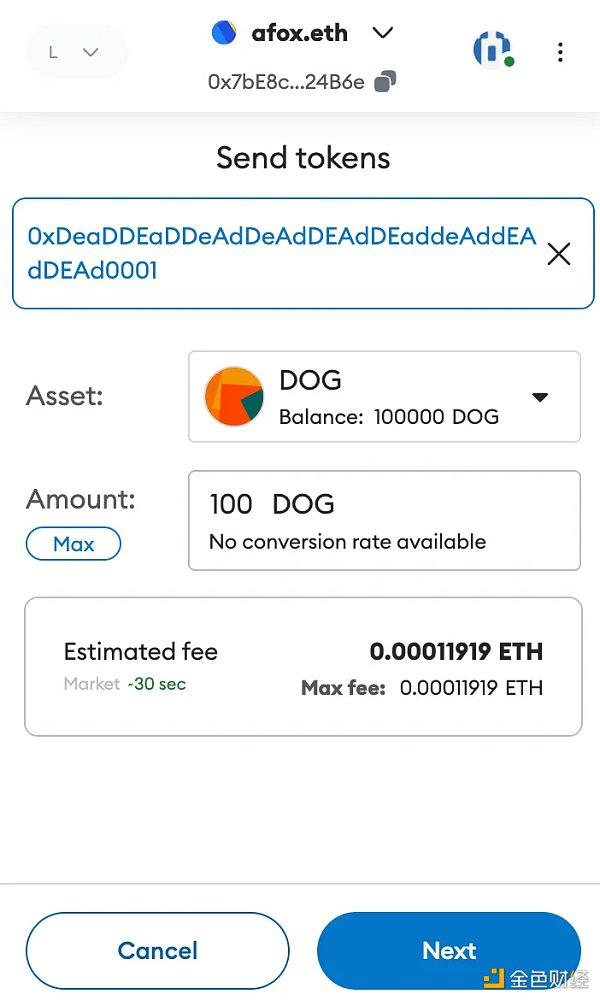
How amazing, not only did we just create our own Rollup, we also created our own Dog token on this new blockchain and put it Send to another account on this new chain.
Integration
As you can see, you can do anything you want on your new L2 blockchain, such as create your own tokens, smart contracts, and dapps.
You can have everything from simple tokens to complex AMMs like Sushiswap running on your Rollup, as we have seen it running on several chains.
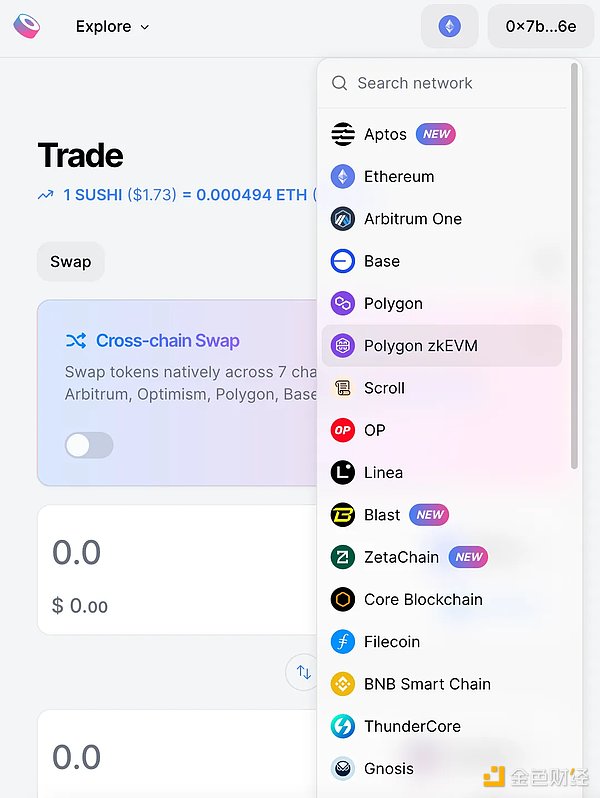
For this kind of integration with different projects, Conduit has an integration page to help you deploy these applications to your new Rollup.
p>
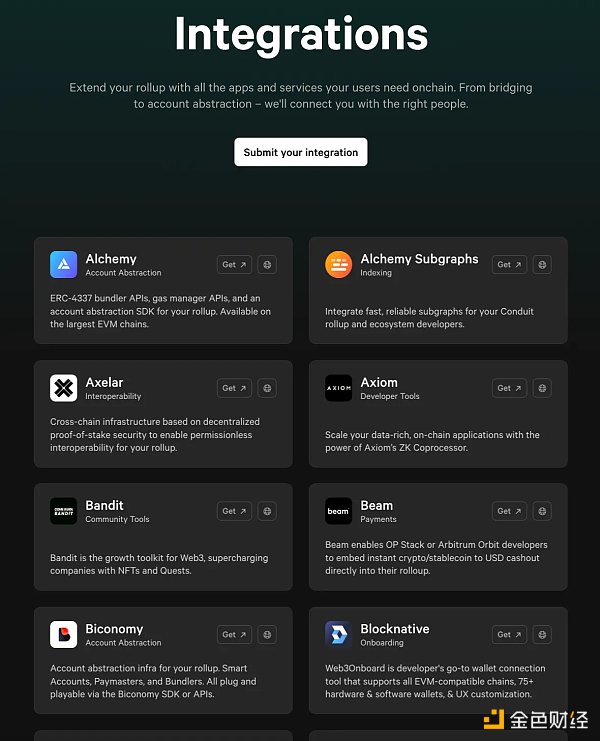
When you select "Get" on any dapp on this page, a type form will pop up where you can explain why you want to use this dapp with Your Rollup integration.
Having such a simple interface to communicate with one of dozens of the most popular dapps is great for launching a brand new Rollup A very helpful thing.
When you are satisfied with everything you have tested, you can migrate Rollup to mainnet. However, upgrades are monthly It costs $3000 and you need to schedule a demo with Conduit to make it work.

Confirm what we did in Explorer
After trying out my new testnet Rollup, I was able to confirm everything that happened by jumping into the block explorer that Conduit also sets up for you.
For example, I can go back to the browser and view my address to see completed transactions and the coins I own.

By selecting the blockchain tab on the left and clicking on an option like "Deposits (L1->L2)" I can For more blockchain-specific information, in this case you can see my bridged Sepolia ETH.

After selecting the token, I can also see the new DOG token I deployed.

We can dig deeper into this token and see that there are two holders since I sent 100 DOG to another one on the network Account.
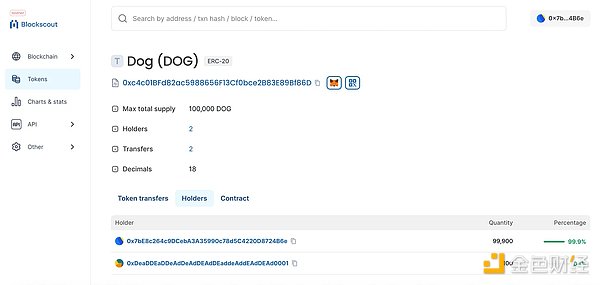
I believe it is obvious that I have only scratched the surface of what is possible with having your own new Rollup. In a future post I may Different use cases will be explored in depth.
The most fascinating thing is that since creating Rollups has become a piece of cake using RaaS, L2 is likely to become common ization, there will be hundreds or thousands of them.
So, the real question will be how to distinguish your L2 Rollup from other Rollups?
 JinseFinance
JinseFinance

 < /p>
< /p>
 < /p>
< /p> < /p>
< /p> < /p>
< /p> < /p>
< /p>

 < /p>
< /p>

















